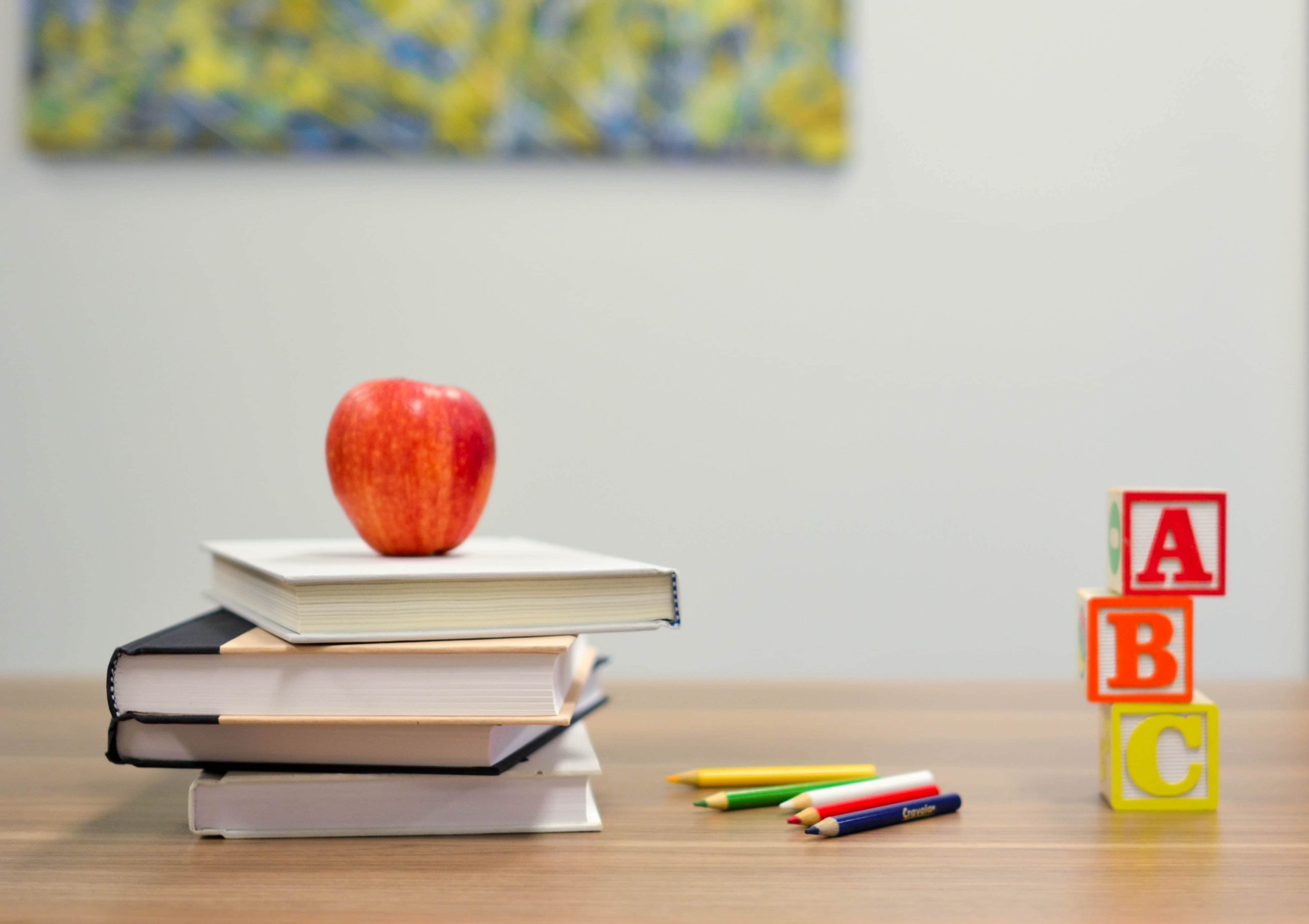Table of Contents
The Credit Guarantee Fund Trust for Micro and Small Enterprises (CGTMSE) was established jointly by the Ministry of Micro, Small, and Medium Enterprises (MSME), the Government of India.
The Small Industries Development Bank of India (SIDBI) facilitates the flow of institutional credit to Micro and Small Enterprises (MSEs). The Credit Guarantee Scheme (CGS) was established to improve the credit delivery system.
Borrowers are eligible for loans from lenders under the Credit Guarantee Scheme for Education Loans (CGFSEL) without pledging any security or third-party guarantee. Let’s explore the scheme and its associated terms and conditions.
What is the Credit Guarantee Fund Scheme for Education Loans?
The Government of India launched the Credit Guarantee Scheme for Education Loan (CGFSEL) in 2015. Under the Indian Banks’ Association’s Model Education Loan Scheme, this initiative was introduced to guarantee education loans to students from economically disadvantaged backgrounds (IBA).
This programme is designed for student borrowers who are unable to pledge collateral for their loan and cannot provide a third-party guarantee.
The credit risk guarantee fund scheme guarantees education loans made by banks under the Indian Banks’ Association’s Model Education Loan Scheme.
Under this scheme, a student can obtain a 7.5 lakh INR collateral-free loan with no third-party guarantee.
| Parameter | Details |
| Scheme Name | Credit Guarantee Fund Scheme for Education Loans (CGFSEL) |
| Initiated By | Department of Higher Education, Government of India |
| Official Website | vidyalakshmi.co.in, education.gov.in |
| Target Beneficiaries | Indian residents |
| Key Benefits | Loan guarantee for educational expenses up to ₹7.5 lakh |
| Application Method | Available Online and Offline |
| Repayment Duration | Maximum of 15 years |
| Applicable Interest Rate | 2% above the base rate |
Objectives of CGFSEL
The Credit Guarantee Fund Scheme for Education Loans (CGFSEL) was established with several key objectives: enhancing educational opportunities for students from economically weaker sections (EWS) in India.
Facilitating Access to Education
The foremost objective of CGFSEL is to facilitate access to education for students who might otherwise be unable to obtain loans due to the lack of collateral.
This scheme is crucial in a country where many families struggle to finance higher education. By allowing students to secure loans without the burden of collateral or third-party guarantees, CGFSEL removes significant barriers that often prevent deserving candidates from pursuing their academic goals.
Promoting Higher Education
Another critical aim of CGFSEL is to promote higher education among students from EWS backgrounds. By making education loans more accessible, the scheme encourages these students to pursue professional and technical courses that can significantly enhance their employability and career prospects.
This benefits the individual students and contributes to the country’s overall economic growth by creating a more skilled workforce.
Reducing Financial Burden
CGFSEL also seeks to alleviate the financial burden on families by providing unsecured loans that cover a substantial portion of educational expenses.
By offering loans up to INR 7.5 lakhs without requiring collateral, the scheme enables families to invest in their children’s futures without incurring crippling debt.
This financial support is essential for many families who prioritise education but lack the means to fully support their children’s aspirations.
Eligibility Criteria
The Credit Guarantee Fund Scheme for Education Loans (CGFSEL) has established specific eligibility criteria to ensure the benefits reach the intended beneficiaries, primarily students from economically weaker sections (EWS).
Here are the key eligibility requirements:
| Criteria | Details |
| Indian Citizenship | Applicants must be Indian nationals, ensuring the scheme supports students within India. |
| Educational Qualifications | Candidates should have completed Higher Secondary Education (HSC), equivalent to Class 12 or any recognised equivalent qualification. |
| Admission to Recognised Institutions | Applicants must secure admission to a recognised higher education course at institutions in India or abroad, based on merit through an entrance test or selection process post-Class 12. |
| Economic Criteria | The annual family income of applicants should not exceed INR 4.5 lakhs, targeting support towards those who genuinely need financial assistance. |
| Loan Account Status | Applicants must ensure that their loan account does not have any overdue payments as of the material date, which is the reference date used in financial agreements. |
These eligibility criteria collectively aim to create a framework that supports students who are most in need of financial aid while encouraging them to pursue higher education and improve their career prospects.
Features Of The Credit Guarantee Fund Scheme
Some prominent features of the CGTMSE loan are as follows:
- The CGTMSE for Education Loans guarantees deserving and eligible students’ education loans. The guarantee is valid for loans up to INR 7.5 lakh.
- After meeting the eligibility criteria for the CGTMSE scheme, eligible students will receive a loan subsidy of up to INR 7.5 lakhs. Even if the total loan amount exceeds INR 7.5 lakhs, they are still eligible for a 7.5 lakh subsidy.
- The subsidy is only valid during the course and moratorium periods.
- A student can only receive the subsidy once in their lifetime, either for their first Bachelor’s degree or for a Postgraduate degree. It should also be noted that the subsidy is only applicable to courses in India.
- The student must provide proof of income. For this proof, a knowledgeable authority appointed by the State Government should be contacted.
- Under the Credit Guarantee Scheme, the lending institution can charge 2% per year above the base rate on education loans.
- The lender cannot charge any margin money on CGTMSE scheme education loans of up to INR 4 lakhs. For loan amounts greater than INR 4 lakh but less than INR 7.5 lakh, the lender may charge 5% as margin money for studying in India. They can charge a 15% margin for studying abroad.
Which Loans Are Covered Under The Scheme?
The Credit Guarantee Scheme for Education Loans covers the following types of loans:
- All education loans made to qualified candidates without collateral or third-party guarantee by lenders participating in the Indian Banking Association (IBA) scheme will be covered by the Credit Guarantee Fund Scheme. The loan should follow NCGTC (National Credit Guarantee Trustee Company) guidelines and adhere to all NCGTC procedures.
- The Credit Guarantee Scheme for Education Loans will guarantee coverage for approved institutes/courses.
- An education loan disbursed quarterly and paid off before the end of the next quarter is eligible for the guarantee cover offered by banks such as SBI, Bank of Baroda, Axis Bank, and others.
Which Loans Will Not Be Covered Under The Scheme?
The CGTMSE loan does not cover the following types of loans:
- Bank loans with interest rates more than 2% higher than the bank’s base rate.
- Loans that do not adhere to the RBI’s or the Central Government’s guidelines, laws, provisions, and instructions.
- A loan in which the risk is already covered in some way by the government or another authority.
- Apply for the Credit Guarantee Scheme for Education Loans now that you know everything there is to know about it.
As soon as the eligible credit facilities are sanctioned, the lender should cover them. In any case, the lender should apply for guarantee cover for eligible credits sanctioned in one calendar quarter no later than the end of the following calendar quarter.
The guarantee will begin on the date of payment of the guarantee fee and will continue for the agreed tenure of the term credit in the case of term loans / composite loans and for 5 years where working capital facilities alone are extended to borrowers or for such period as the Guarantee Trust may specify in this regard.
Exploring Non-Collateral Loan Options for Studying Abroad
The Credit Guarantee Fund Scheme for Education Loans (CGFSEL) offers significant support by providing collateral-free loans up to INR 7.5 lakhs for students aspiring to study abroad.
However, students who want to study abroad, especially at prestigious institutions with considerably higher expenses, will have to look for other options to secure non-collateral loans. This is where UniCreds emerges as an ideal solution.
UniCreds specialises in offering non-collateral abroad education loan tailored specifically for students pursuing their studies overseas. With a streamlined application process and flexible repayment options, UniCreds ensures that financial constraints do not hinder students from achieving their academic goals.
By leveraging platforms like UniCreds, students can access the necessary funds to begin their educational journeys abroad, paving the way for a brighter future.
Need for Non-Collateral Loans
Non-collateral loans are essential for students who lack significant assets, enabling them to pursue higher education without the burden of securing a loan against property.
- Focus on Academics: By not requiring collateral, students can concentrate on their studies rather than worrying about losing valuable assets if they default on their loans.
- Broader Opportunities: These loans open doors for a wider range of students, particularly those from economically disadvantaged backgrounds, allowing them to study abroad and gain international exposure.
- Faster Processing: Non-collateral loans generally have a quicker approval process since there is no need for asset evaluation, allowing students to secure funding promptly.
- Flexible Repayment Options: Many lenders offer flexible repayment plans tailored to students’ financial situations, making it easier to manage loan repayments after graduation.
- Encouragement of Diverse Fields: Non-collateral loans enable students to pursue various fields of study, including those that may not traditionally attract funding.
- Support from Financial Institutions: Banks and financial institutions increasingly recognise the importance of non-collateral loans, providing tailored products that meet the needs of aspiring students.
Application Process
Applying for an education loan under CGFSEL involves several steps:
Step 1: Research and Documentation
Students should gather necessary documentation, including proof of income and admission letters. It’s essential to understand what documents will be required by lending institutions to avoid delays in processing.
Step 2: Approach Lenders
Students can approach any member lending institution that participates in the CGFSEL scheme. These institutions are typically available on government websites and educational portals.
Step 3: Loan Assessment
Banks will assess applications based on academic credentials and financial background. This assessment includes evaluating the student’s academic performance and the credibility of their chosen institution.
Step 4: Loan Sanctioning
Upon approval, students will sign an agreement for disbursement, which will be made directly to their educational institution. This ensures that funds are used specifically for educational purposes.
Benefits of CGFSEL
The CGFSEL offers numerous advantages that make it a valuable resource for students:
| Benefits | Details |
| Unsecured Loans | Students can obtain significant loans without the need for collateral or third-party guarantees, making it accessible for those from families with limited assets. |
| Ease of Access | The application process is simplified compared to traditional loan applications, allowing students to navigate paperwork and requirements more efficiently. |
| Support for Diverse Courses | The scheme provides financial assistance for a wide range of courses, including those offered by esteemed institutions in India and abroad. |
| Encouragement of Entrepreneurship | By facilitating access to higher education, CGFSEL indirectly promotes entrepreneurship among graduates who may wish to start their businesses after completing their studies. |
Challenges and Considerations
While the CGFSEL presents significant benefits, some challenges and considerations need addressing:
| Challenge | Details |
| Loan Limitations | The maximum loan of INR 7.5 lakhs may not cover all educational expenses, especially for expensive programmes. |
| Awareness and Accessibility | Many eligible students are unaware of the scheme, necessitating increased outreach and awareness campaigns. |
| Economic Fluctuations | Changes in economic conditions could affect eligibility criteria and loan amounts, limiting the scheme’s impact. |
| Repayment Challenges | Graduates may struggle to find employment quickly, leading to difficulties in timely loan repayment. |
Future Prospects
There are discussions regarding increasing the maximum loan limit under CGFSEL from INR 7.5 lakhs to potentially INR 10 lakhs or more. Such an increase would support students pursuing higher education amid rising tuition fees globally.
Additionally, as more educational institutions begin offering online courses and hybrid models due to technological advancements and changing learning preferences post-pandemic, there may be opportunities for CGFSEL to adapt and cover these new forms of learning.
Moreover, integrating technology into the application process could streamline approvals further and enhance transparency in how funds are disbursed and managed.
Why Choose UniCreds for Education Loans
UniCreds is dedicated to empowering students by providing seamless education loan solutions that cater to their financial needs for studying abroad.
We offer up to 100% financing with competitive interest rates, ensuring financial constraints do not hinder academic aspirations.
Our 100% digital process allows quick loan approvals, often within 48 hours. With our commitment to supporting students, we are proud to help turn educational dreams into reality.
FAQs
1. What is the maximum loan amount available under the CGFSEL?
The maximum loan amount available under the CGFSEL is INR 7.5 lakhs. This amount can be availed without collateral or a third-party guarantee, making it accessible for students from economically weaker sections who may not have significant assets to pledge.
2. What are the interest rates applicable under the CGFSEL scheme?
The interest rates for loans under the CGFSEL scheme are capped at a maximum of 2% above the base rate set by the lending banks. This competitive interest rate structure is designed to make education loans more affordable for students, encouraging them to pursue higher education.
3. What is the moratorium period for repayment of loans under CGFSEL?
The moratorium period under CGFSEL lasts for the duration of the course plus an additional one year after course completion. This means that students do not need to repay their loans until they have had sufficient time to secure employment, which can significantly ease financial pressure during their transition from education to work.
4. Are there any specific documentation requirements to apply for a loan under CGFSEL?
Yes, applicants must provide several documents, including proof of identity and address (such as Aadhaar or voter ID), proof of income, an EWS certificate, proof of admission to a recognised institution, and previous academic qualifications. These documents help verify eligibility and ensure funds are appropriately allocated to deserving candidates.
We hope that this guide has helped you. You can also read some of our other blogs:





![60+ Extempore Topics for Students in 2025 [Speak Confidently]](https://cdn.unicreds.com/blog/wp-content/uploads/2025/06/22121909/extempore-topics-for-students-1080x675.webp)




0 Comments